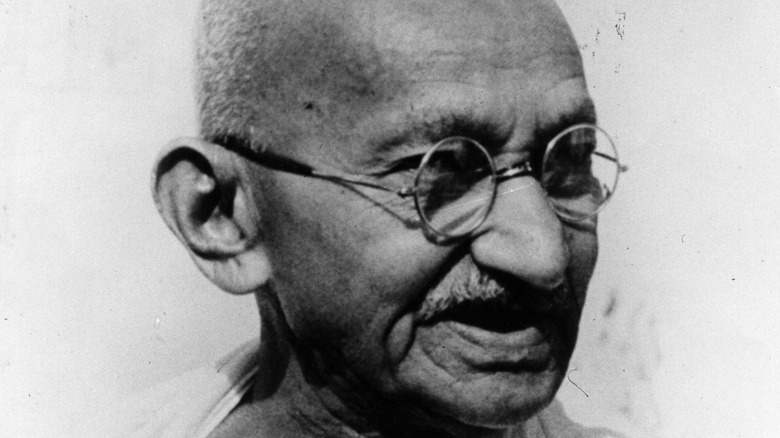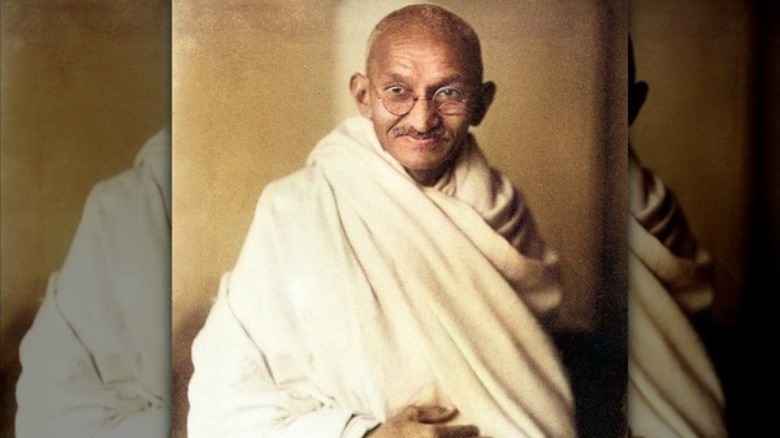This Colorized Photo Will Change How You Look At Gandhi
Mahatma Gandhi was born in 1869 in a region of India (Porbandar) that was under the rule of the British Empire, Biography reports. As National Geographic explains, his trademark was non-violent non-compliance, also referred to as Satyagraha ("truth and firmness"). This is not to say that Gandhi didn't rebel in the traditional sense; indeed, his teenage years were marked by rebellious behavior, which he promised his mother he would put behind him when he left India for London to become a law student.
Mahatma was not Gandhi's given name — his true name was Mohandas Gandhi. Mahatma refers to the Sanskrit word "mahātman," which means "great-souled" (per Merriam-Webster). An honorable and peaceful leader, he responded to the notorious Amritsar Massacre with a program of satyagraha. During the massacre, British troops killed around 400 protestors demonstrating against a law passed in 1919 that allowed imprisonment without trial of those believed to be revolutionaries. Luckily, Gandhi's program helped lead to India's independence, which it finally gained in August 1947.
Although Gandhi is a face known around the world, you probably haven't seen him quite like this before.
A positive attitude, a righteous goal
Though Gandhi is often regarded as a super-serious, pious man, this colorized photograph emphasizes his wry smile. In fact, it gives a sense that perhaps he's fondly remembering those youthful indiscretions he left behind. This is surprising, considering the hardships he endured while leading India to liberation.
According to Wikimedia Commons, the original photograph was taken in 1931. The previous year, Gandhi was embroiled in the Salt March, which took place between March and April of 1930 (via History). It was organized in defiance of the British Salt Act enacted in 1882, which forbade the people of India from collecting their own salt and forced them to buy heavily-taxed British products instead. In response, Gandhi led a march from Sabermanti to Dandi (240 miles or so), gathering thousands of supporters along the way. Their goal was to make salt at Dandi, a town on the Arabian Sea, and they did just that.
Around 60,000 arrests were made as supporters defied the British across India. Gandhi was incarcerated for some months and freed in January of the very year this photograph was taken. And this wasn't the first time he was imprisoned — he was found guilty of sedition against the government in 1922 and served two years of his six-year sentence before his appendicitis saw him released on medical grounds, per National Geographic. The amiable leader lived to see India become free, but not for long — he was tragically assassinated the following year.

